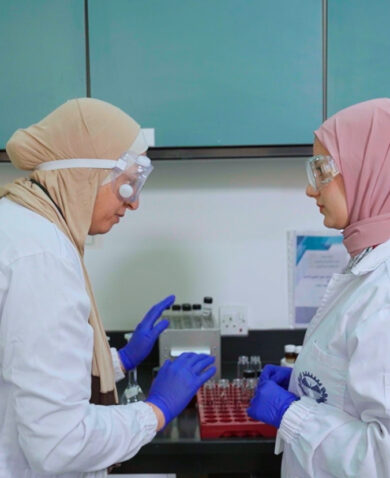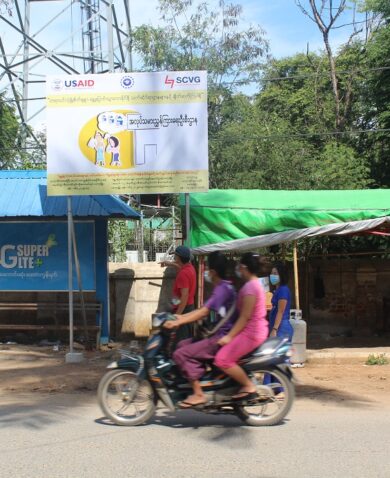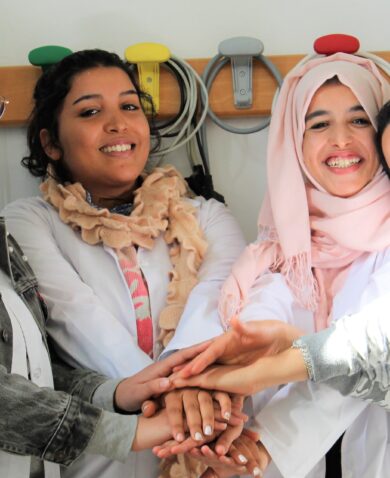
Chemonics News
News: Chemonics Releases SHEA Prevention and Response Toolkit
February 4, 2020 | 3 Minute ReadThe free, open-access toolkit provides organizations with a step-by-step guide on how to lead training and set up systems to prevent and respond to sexual abuse.
Chemonics has launched a Sexual Harassment, Exploitation, and Abuse (SHEA) Prevention and Response Toolkit to help the development community protect people from sexual assault and to engage organizations in working and learning together to share best practice and important lessons in SHEA.
The free, open-access toolkit provides organizations with a step-by-step guide on how to lead training and set up systems to prevent and respond to sexual abuse.
Sexual harassment, exploitation, and abuse is a problem that affects all sectors’ workforces, all corners of the globe, and people living across the full spectrum of sexualities and gender identities. Strong workplace anti-sexual harassment and assault mechanisms provide pathways for staff to access appropriate protection without fear of retaliation and promote an environment where individuals feel safe and respected.
“To support sexual harassment, exploitation, and abuse prevention and response initiatives, the international development sector must work together to share tools and lessons learned. Scaling and sharing the toolkit is one example of how we hope that we, as a global community, can collaboratively reduce instances of sexual abuse,” said Shauna Caria, manager on Chemonics’ Gender Equality and Social Inclusion (GESI) Practice and co-author of the toolkit.
Chemonics’ toolkit provides organizations with a “how-to” guide for setting up a SHEA prevention and response program. The practical guide consists of three conceptually distinct but interrelated components: policies and procedures; training and outreach; monitoring, evaluation, and learning.
The policy and procedures component helps organizations develop documents and systems so that staff can understand and clearly articulate their roles, rights, and responsibilities regarding SHEA prevention and response. This may include a SHEA/safeguarding policy, code of conduct, reporting procedures, and a transparent process for investigations.
A set of policies and procedures are not relevant if staff are not aware of them. The training and outreach component provides organizations with guidance on how to communicate policies and procedures to all staff in an inclusive and accessible manner. Organizational cultures must be informed by additional staff training around SHEA intervention and response. For example, this component contains information on bystander intervention training, a proven methodology that provides a framework for how to safely and appropriately interrupt a potentially harmful situation before it escalates.
The section on monitoring, evaluation, and learning allows organizations to identify and monitor relevant SHEA prevention and response indicators. The guide helps organizations consider how data will be collected and to whom it will be reported. This information will allow organizations to identify trends, focal points, areas for sharing lessons and successes.
The resources will increase staff’s understanding of SHEA issues and awareness of how to detect and report potential incidents. It will improve workers’ ability to recognize, interrupt, and respond to SHEA incidents.
The toolkit is intended for any organization, including government ministries, local government entities, civil society organizations, and private sector enterprises interested in developing a program to address SHEA within their workplace and the work that they do. The toolkit has been devised to meet organizations where they are, whether they are starting from scratch or looking to strengthen systems and practices.
“The Sexual Harassment, Exploitation, and Abuse Prevention and Response Toolkit embodies Chemonics’ commitment to the safeguarding agenda. Collaboration and knowledge sharing is vital to driving forwards consistency and best practice on safeguarding,” said Melissa Logan, chief ethics and compliance officer at Chemonics.
Chemonics piloted the SHEA toolkit at a workshop in two unique contexts. First, it coordinated with USAID’s Human Rights Activity in Colombia and the Ombudsman’s Office. The toolkit was also piloted with the USAID Promoting Rule of Law in Myanmar Project, along with a network of civil society organizations: WIN Peace, Women’s Organizations Network, and the Local Resource Centre. Both experiences confirmed that the strength of the toolkit lies in its flexibility. Participants could pick and choose which resources to adopt and apply based on their context and the strength of their systems.
The Sexual Harassment, Exploitation, and Abuse Prevention and Response Program Toolkit was written by Shauna Caria and Ashley Snell Goldstein, a consultant to the GESI practice and former training administrator for the U.S. Peace Corps Office of Safety and Security. To learn more about the toolkit, read this blog post by its authors.




























